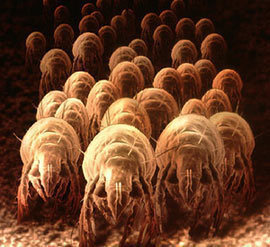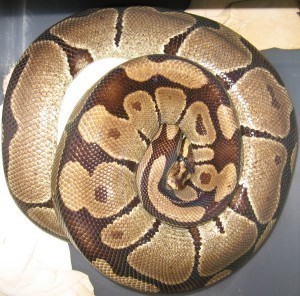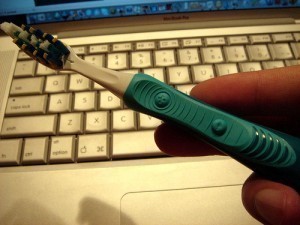How Big are Dust Mites?
Dust mites are a common guest in most homes all  over the world. If you have mattresses, couches, pillows and practically any other furniture and home accessory that have been with you for at least a year or two, it is very likely that your unwelcome guests have already made a home in your home!
over the world. If you have mattresses, couches, pillows and practically any other furniture and home accessory that have been with you for at least a year or two, it is very likely that your unwelcome guests have already made a home in your home!
They feed on shed human and animal dead skins. Since people shed a considerable amount of dead skin cells per week and since these are commonly found in couches, beds and other furniture; the dust mites prefer these as their dwelling places.
How Big are Dust Mites?
A dust mite is similar to other infinitesimally small bugs including lice when it comes to size. They are approximately .4 millimeters long and about .32 millimeters wide.
Even under normal lighting, you may not readily see them unless they are they are set against a dark backdrop. They have a sort of milky blue shade and are shaped like a rectangle.
A male dust mite can only live up to an average of nineteen days while a pregnant female dust mite can last up to seventy days, laying approximately one hundred eggs.
So if you take several female dust mites, put them in your house; your carpet alone can already have hundreds of thousands of dust mites and you may not even be aware of it!
Reactions to Dust Mites
While the dust mite does not carry any diseases, you may develop allergic rhinitis because of their droppings on your mattresses, pillows, carpet and other furniture. Your clothes could also have dust mite droppings.
On the other hand, if you have asthma, the presence of dust mites can trigger asthma attacks. Allergic reactions could include water eyes, sneezing, runny nose, hay fever and coughing.
Getting Rid of Dust Mites
To eliminate your dust mite problem, it is important to undertake general cleaning of the entire house, particularly beds and mattresses, couches, furnishings, pillows and other beddings.
Soak all your pillow cases, sheets, furniture covers and even clothes in hot water and then wash. It is important to change your beddings at least once every 2 weeks.
To protect your mattresses, pillows and furniture; there are special dust mite covers that you can use. You may also use plastic covers for your mattress and pillows to prevent dust mites from dwelling in these places.
Since dust mites thrive in warm places, you may decrease your humidity and temperature levels inside the house to make them feel unwelcome in your house.





